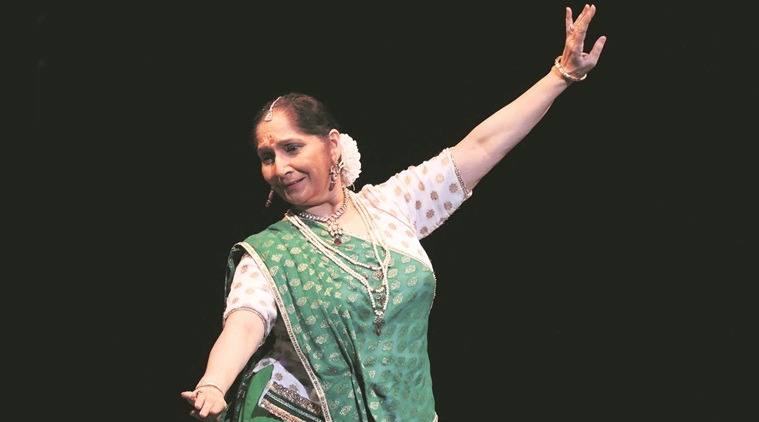Dance cannot be conservative: Uma Dogra
Kathak exponent Uma Dogra on Jaipur and Lucknow gharanas and how Mumbai made her liberal

Uma Dogra in performance
There aren’t many Kathak dancers today who are open to combining their training with conventions of other classical forms. Many have chosen to take the contemporary route (Akram Khan, Aditi Mangaldas), while some have combined it with the Spanish flamenco (Pt Chitresh Das). However, Mumbai-based Uma Dogra was never content with limiting herself and has turned the art form and its stories (Kathak comes from the word katha) into delightful fables that often imbibe the nuances of Odissi, Bharatanatyam and Mohiniattam into Kathak. “I am not very conservative. Art, especially dance, cannot be,” says the 62-year-old Dogra, who will perform in the Capital as part of the 22nd edition of Parampara Series, 2018, the music festival created and curated by Kuchipudi legends Raja and Radha Reddy.
At the festival, Dogra will present two new choreographies – Ashtapadi with concepts taken from Odissi and a Panchajaati Shivstuti, an ode to Lord Shiva, where she’s taken Sanskrit shlokas and tried to make them more complex by dividing the rhythm into five parts. There will also be Kreeda, in which instead of using the usual teen taal (16-beat time cycle) or dhamar (14-beat time cycle), she will pair it with Pancham Savari in a 15-beat time cycle, where beats are not uniform in distribution.
Growing up in Delhi’s Malviya Nagar in the home of a sitar-player father and a musically inclined mother, Dogra was always keen on learning “the instrument that created the most beautiful sound”. But her father, an A-Grade artiste at All India Radio was either busy at the radio station or teaching students at home. “My mother diverted my attention to Kathak,” says Dogra, who after learning from a teacher near her house went to Delhi’s Kathak Kala Kendra, which was at Kingsway Camp where she learnt from Reba Vidyarthi. This was before Dogra, then 13, tutored for a year under Lucknow gharana luminary Pt Birju Maharaj. She left the Kendra soon due to the “exploitative atmosphere” which was not conducive for art. “I was 13 and even though I was very young I didn’t like the atmosphere where female dancers weren’t respected. I felt there was a lot of exploitation of girls. I wasn’t even living in the hostel, but the things I saw, I felt claustrophobic. So many wrong things were happening there and it wasn’t my cup of tea,” says Dogra.
She then learnt from Pt Durga Lal of the Jaipur gharana for 18 years. She’d seen him perform during her stint at the Kathak Kala Kendra. The shift from Lucknow to Jaipur gharanas was significant in dance circles, because of the belief that while Jaipur gharana is all about virtuosity, Lucknow dancers deliver bhaav better. “Dance is complete with all three aspects — nritya, nritta and bhaav. So many Lucknow dancers are wonderful in their footwork while many Jaipur dancers are all about bhaav,” says Dogra, whose current performances are more focused on bhaav. “Sitara (Devi) ji once told me, ‘Pyar kiya ha kabhi? (Have you ever fallen in love?). Bhaav will follow’.”
Dogra’s marriage in 1984 took her to Mumbai, where dance meant Bollywood and classical forms were dominated by Bharatanatyam and Kathakali. Sitara Devi was one of the few Kathak dancers based there then. “Finding my footing in Mumbai was hard but it was also so liberal that it taught me to be the same towards my art form,” says Dogra, who began Samved Society for Performing Arts, and two dance festivals. Her introduction to Hema Malini led her to work on the popular ballet Meera, and TV series titled Noopur.
“It is pathetic that Kathak is expected to be a certain way now. The audience expects us to do chakkars, fast-paced footwork. Gone are the days when artistes like Shambhu Maharaj used to do abhinaya for hours,” says Dogra. Now after a career of 45 years, Dogra finds herself in the role of a teacher, but being on the stage is when she is at peace. “There is a lot to give. I’m not tired yet.”
Uma Dogra will perform on August 12 at Kamani Auditorium, 7 pm. Entry is free






















No hay comentarios:
Publicar un comentario